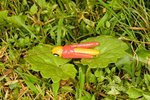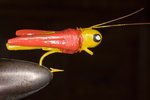We seem to have been experiencing the “dog days of summer,” days of very hot and humid weather, non-stop since they began; in our area from around the 3rd of July through August 11. The old …
This item is available in full to subscribers.
Please log in to continue |


We seem to have been experiencing the “dog days of summer,” days of very hot and humid weather, non-stop since they began; in our area from around the 3rd of July through August 11. The old Farmer's Almanac explains that in ancient Greece and Rome, the Dog Days were believed to be “a time of drought, bad luck, and unrest, when dogs and men alike would be driven mad by the extreme heat”! but the real reason this time period was referred to as Dog Days is because the timing coincides with the rising of Sirius, the Dog Star, at sunrise. Sirius, which is part of the Canis Majoris (Greater Dog) constellation, is the brightest star in the sky, not counting our Sun.
Hot weather aside, we are appreciating life during this shelter-at-home time, hearing less noise from fewer cars going by on the road and more songs from the many birds visiting our feeders; enjoying the beautiful summer blossoms of various colors -our multi-colored daylilies that have followed the Queen Anne's Lace and wild phlox, feverfew and daisies; and dining on so many fresh vegetables from the garden. There is generally a breeze coming up the hill from the Willowemoc, and it is lovely out on the shaded deck in the afternoons and evening once the sun has passed over the house. We are noticing so much wildlife in the backyard and garden, nesting wrens feeding their babies, squirrels and chipmunks performing acrobatics at the birdfeeders, and what appears to be an explosion of wild cottontails - it's been most entertaining watching the family of bunnies every day from the house and deck.
Not surprisingly for trout fishers, this hot humid weather is generally not conducive to great trout fishing. A side note - the Beaverkill at Horton Bridge is now temporarily closed for fishing. The NYS DEC website states that angling is prohibited from July 1 through August 31 on the Beaverkill from the Iron Bridge at Horton downstream to the first Route 17 overpass bridge to protect thermally stressed trout. All other fishing on the Beaverkill is allowed. The good news is that our rivers and streams have been replenished by the rain and thunderstorms; this past week the Beaverkill at Cooks Falls has been flowing above the average flow. On Sunday afternoon, July 26, 2020, the river was recorded at 150 cubic feet per second; compared to the average flow on this date of 140 cfs over 106 years of record-keeping. Water temperatures are still higher than we'd like to see, which really limits good fishing to early mornings and evenings.
Current hatches include Isonychias in sizes #10 and #12, which usually hatch in the afternoons through evening; Light Cahills in sizes #12 - #16; small Blue Quills size #18, tiny Sulphurs and Blue-Winged Olives in sizes #18 - #20, and of course even tinier Midges, sizes #20 - 24. However, trout fishers should not forget about Terrestrials during midsummer. This is the time of year to fish with ants, beetles, hoppers (grasshoppers) and inchworms. You may find that you will do best using terrestrial imitations when fishing under overhanging trees, logs or undercut riverbanks, especially after a rainshower, of which we've had many lately.
A couple of standard Grasshopper patterns make use of turkey feathers and include a favorite pattern tied with mottled turkey for the wings, light yellow wool for the body, with brown hackle palmered and clipped, red hackle barbules for the tail, and grizzly hackle. The hook sizes that work best for this and the following pattern is a size #12 or size #10, with a 3X long shank.
A second is Joe's Hopper, which is tied with brown turkey wings, usually lacquered, tied parallel to the body. The body is of yellow wool with a red tail. The hackle is grizzly dyed brown, and brown palmered down the body and clipped. Interestingly, the palmer style of dressing a fly has been mentioned in fly fishing books of the fifteenth century. This style of dressing a fly, winding the hackle the length of the body, was, at the time, being praised in books as the first type of fly to be used until a hatch was observed. The palmered hackle will move freely when the fly is drawn through the water, suggesting a swimming movement and giving life to the fly, making it almost irresistible to the trout.
Judy Van Put is a long-time member of the NYS Outdoor Writers Association, and is the recipient of the New York State Council of Trout Unlimited's Professional Communications Award.
Comments
No comments on this item Please log in to comment by clicking here